With more than 37,000 units converted to the Permanent Affordability Commitment Together (PACT) program, tenants weighed in on the model that’s brought the housing authority $13.2 billion worth of repairs, so far.
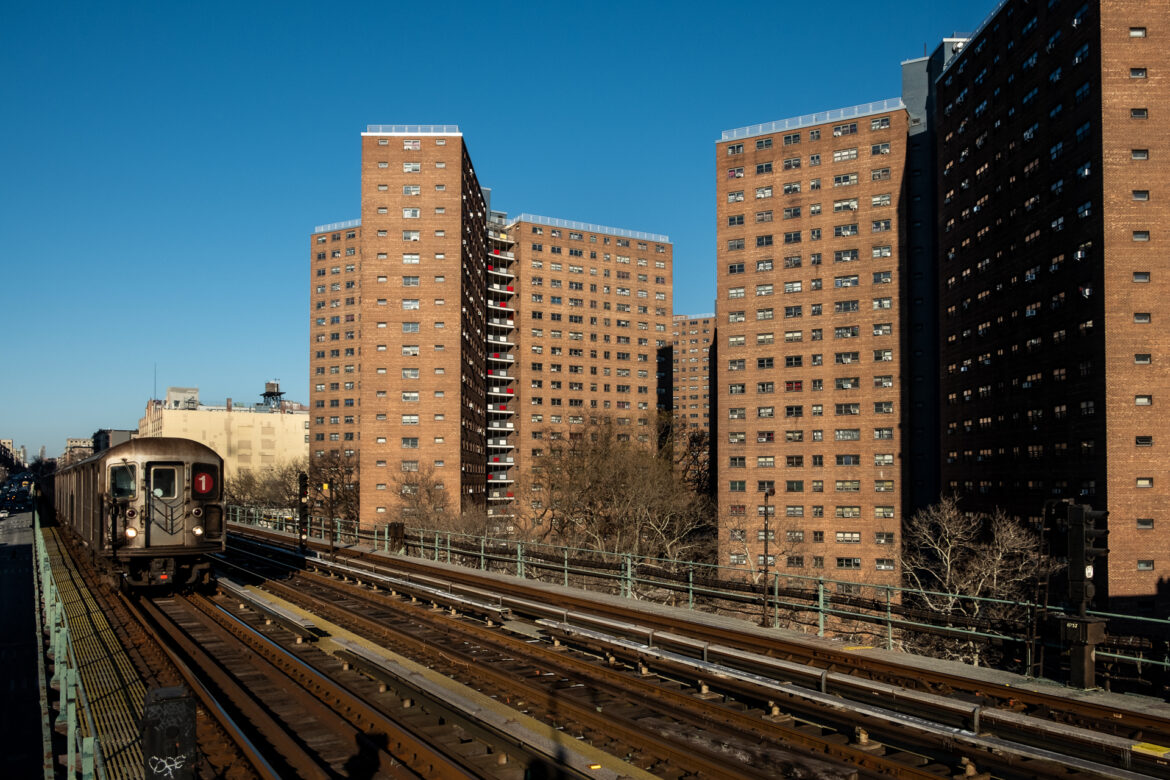
Adi Talwar
NYCHA’s Manhattanville Houses in Harlem is one of 138 public housing developments across the city selected for the Permanent Affordability Commitment Together (PACT) program.On a recent Tuesday evening, the New York City Housing Authority (NYCHA) held a public hearing to welcome comments about its annual and five-year plans—an overview of the agency’s upcoming policies, programs and operations, including its finances and planned repair work.
Each year, NYCHA holds these hearings as part of a federal requirement for public housing authorities to open the floor for any remarks.
During the two-and-a-half hour session, more than 40 NYCHA residents, politicians and tenant advocates spoke on various topics, including needed repairs at their developments and some of the hardships tenants face after being put at the back of the line for statewide COVID rent relief.
Taking the main stage, however, were concerns about the Permanent Affordability Commitment Together (PACT) initiative, which converts traditional Section 9 public housing units over to Project-Based Section 8, another federal program.
This change allows for NYCHA to lease its properties to private managers, who take on daily operational tasks, such as maintenance work and rent collection. The arrangement also allows the newly-formed partnership to tap into different revenue streams, including issuing bonds to fund major renovations.
The housing authority announced last year that it needs close to $80 billion to fund capital repairs across its portfolio over the next two decades. To chip away at the mounting cost, NYCHA turned to initiatives like PACT—and another, newer model called the Public Housing Preservation Trust—to invest and rehabilitate aging developments in lieu of deeper government investments in Section 9, which has been underfunded for decades.
In her introduction at the July 30 public hearing, NYCHA’s Chief Executive Officer Lisa Bova-Hiatt shared that a total of 138 developments across the city are either in the planning and engagement phase, under construction or have completed the conversion to PACT, resulting in an estimated $13.2 billion worth of renovations.
At PACT sites, renovations typically include in-unit repairs such as revamped kitchens and bathrooms, as well as upgrades to shared spaces like playgrounds.
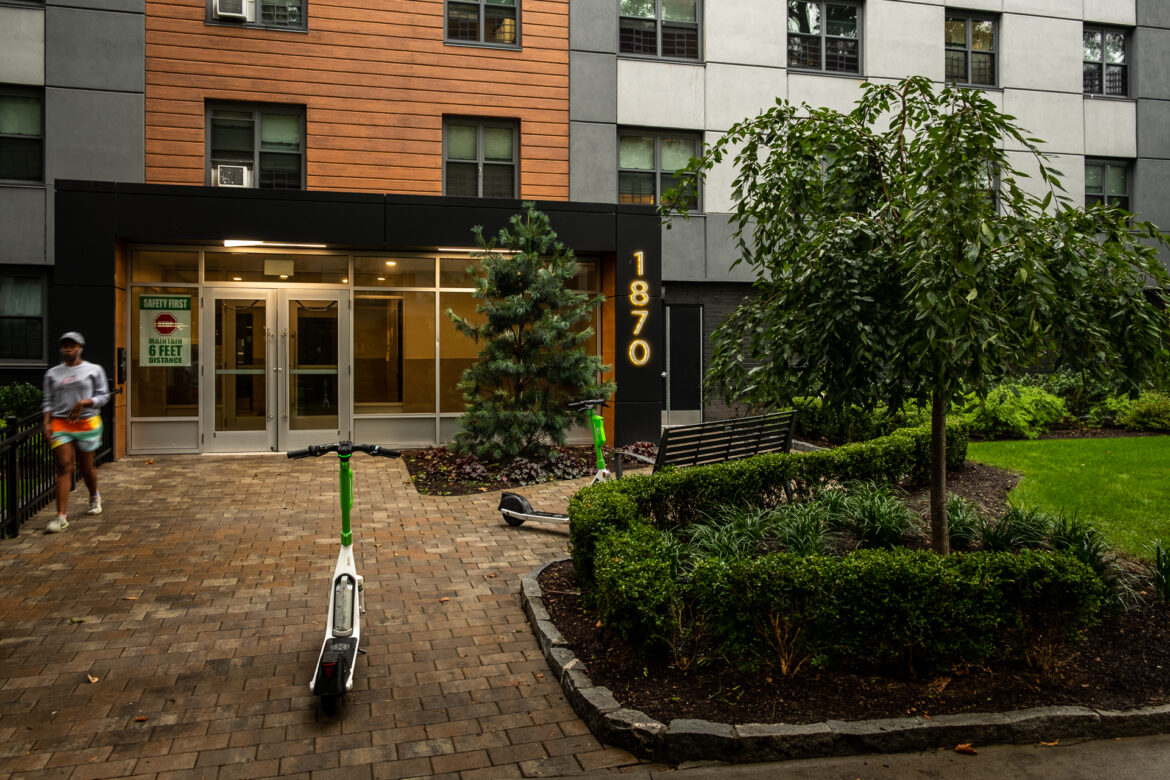
Adi Talwar
NYCHA’s Baychester Houses in the Bronx was part of a $261 million PACT renovation project, alongside the Murphy and Betances Houses developments, that finished in early 2021.“With respect to our PACT program, over $5.7 billion in capital repairs have already been completed or are currently underway,” said Bova-Hiatt. “We have 51 developments that are currently in planning and resident engagement for a total of 16,000-plus units and that will encompass over $7.5 billion in capital repairs.”
Residents, however, have expressed frustrations with the conversion process, citing lack of communication with new management teams and having to move forward with plans they say were not agreed to by the majority.
Starting last year, NYCHA has allowed residents at five campuses to vote on which funding model they want, choosing between PACT, the Preservation Trust or remaining in Section 9. But none of the developments transferred to PACT so far were given that option, and were instead selected by NYCHA.
That’s been noted by Brooklyn Councilmember and Chair of the Committee on Public Housing Chris Banks, who held a Council hearing specifically on PACT conversions back in April.
“We must keep in mind that while some seek profit in converting NYCHA to RAD-PACT and the Preservation Trust programs, that we are dealing with human lives and that these buildings are their homes,” Banks said at the public hearing. “I believe that any change from the protection and preservation of the Section 9 program must include a compulsory vote of all those residents who will be impacted.”
So far, two developments—Nostrand Houses in Sheepshead Bay, Brooklyn, and Bronx River Addition in Soundview—have opted for the Trust.

Adi Talwar
A flyer promoting the Preservation Trust, hung on the door in the Coney Island Houses, where residents are currently being asked to vote on which funding model they want.In South Brooklyn, Coney Island Houses and Unity Towers are finishing their voting session, which ends on Thursday. And NYCHA just announced that the Hylan Houses, in Bushwick, Brooklyn, will begin voting in November.
The Trust, signed into law in June of 2022, keeps NYCHA management in place while converting the property to Project-Based Section 8 to tap into its more lucrative funding stream. Rather than bringing in private developers, as PACT does, the Trust—which partners with NYCHA to carry out repairs—is a public government entity run by a nine-member board.
Currently, the goal is to convert 25,000 public housing units over to the Trust.
At the hearing, Manhattan Assemblymember Harvey Epstein said he respects residents’ right to vote, but questioned how much of a choice NYCHA tenants are being offered.
“Are Section 9 tenants being offered a fully renovated Section 9 building?” asked Epstein. There were scattered “no’s” throughout the auditorium at the Borough of Manhattan Community College.
“So, when you’re being told you can vote between continuing to live in dilapidated conditions or have a private developer come in and we get millions in investments, what kind of choices are people making?” he said.
When presenting information about the voting process to residents at selected developments, NYCHA shares that although repairs will continue to be made under the Section 9 program, the housing authority only receives about $700 million annually from Congress for that work. The amount is just a slice of what NYCHA says it needs, ultimately limiting the amount of repair work that can be done.
Shaquaisa Spears, a resident at the Boston Secor Houses in the Bronx, which is set to become a PACT development in the coming weeks, testified on Zoom, raising concerns about the lack of inclusion in the conversion process.
“The decision to turn Boston Secor into a Project-Based Section 8 development from federally funded Section 9 programming was made on our behalf by a tenant association president who has since passed away,” said Spears. “Private real estate corporations shouldn’t be making decisions for us, especially when the tenant interests and concerns are being ignored.”
Boston Secor is a part of a larger PACT project including Boston Road Plaza and Middletown Plaza. Together, there are 1,782 residents across 952 apartments, according to NYCHA.
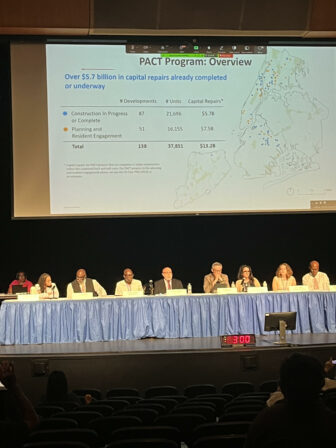
Tatyana Turner
NYCHA officials on stage at the agency’s public hearing on its annual plans on July 30.NYCHA countered criticism about tenant involvement by pointing to its public engagement efforts. About six months after releasing a Request for Expressions of Interest for the three Bronx developments, it formed a Resident Review Committee (RRC) to go over details of the conversion proposal and interview prospective PACT partners.
The Boston Secor Tenant Association president was represented, along with three members of the RRC, according to NYCHA. Together, the group met five times.
During the summer of 2021, the housing authority introduced the PACT program to the three developments in introductory meetings attended by more than 150 residents, according to NYCHA.
In March of 2022, 63 Boston Secor tenants went to another onsite informational meeting, and NYCHA held weekly on-site office hours at the campus to answer questions.
To date, according to NYCHA, the PACT partner groups chosen to take over management and repairs—Beacon Development, Kalel Companies, Mid-Bronx Desperados, and Wavecrest Property Management—held six meetings for residents at Boston Secor. At least a week prior to the meetings, the housing authority delivered written notices in both English and Spanish to every door, along with robo calls and emails sharing the time and location of the sessions.
Renee Keitt, a resident at the Elliott Houses in Manhattan, shared a similar sentiment to Spears’ when she approached the podium moments after.
The Fulton and Elliott-Chelsea Houses are among the 138 developments in the PACT program, but the properties are in a unique position because of a proposal that would allow for razing the buildings and constructing new ones from scratch.
Last summer, NYCHA announced that a majority of tenants who participated in a survey approved of the plan. But Keitt fired back against those results, arguing that the survey was not a true reflection of what residents want.
The detailed survey results, which Manhattan’s Community Board 4 Land Use Committee published in April, show just 37 percent of eligible households and 29 percent of eligible residents weighed in.
Out of a total of 969 responses, 419 (43 percent) opted for rehabilitation of existing units while 550 (57 percent) opted for new construction and “full replacement of existing units”—a phrase tenants said misled them because it did not mention the term “demolition.”
“The fact that it took 11 months to reveal the total should raise suspicions, and numerous FOIL requests…and I mean numerous,” Keitt said.
“NYCHA stands by the results of the survey and supports the residents’ desire to redevelop Fulton and Elliott-Chelsea,” a spokesman for NYCHA told City Limits in a statement.

Adi Talwar
NYCHA residents protesting the Fulton and Elliott-Chelsea demolition plan before a public hearing in the fall of 2023.The housing authority also said that it is proud of the level of tenant participation at Fulton and Elliott-Chelsea, citing “robust” communication with residents since 2019, when the idea of reimagining the Manhattan campuses—including a partial demolition—was first brought to the table. That proposal was initially dropped, then revisited in 2023.
Since then, the housing authority says it has held more than 30 town hall meetings over a three-month period, in conjunction with PACT partner Essence Development, and has worked with tenants to understand their interest in rebuilding their homes versus rehabilitating them.
In this design-build contract, the development team would construct three new high rise buildings and demolish all 2,055 apartments after tenants have been moved out. Neighboring the new complexes would be 3,500 mixed-income, market-rate units on NYCHA land.
Should the proposal be approved, it would be the first development under PACT to be replaced with entirely new units, as opposed to the typical on-site fixes.
“My home, my community, is not to be destroyed for your benefit or anyone else’s,” Keitt said directly to Bova-Hiatt and NYCHA Chair Jamie Rubin.
Cynthia Tibbs, a tenant association president at the West Side Urban Redevelopment (WSUR) Brownstones, testified that she has stopped her development from being converted to PACT twice.
“I reject this program time and time again and I’ve noticed how NYCHA likes to circle back around and reimplement us back into the program and I will continue to fight against this program,” Tibbs said.
A NYCHA development can be considered for PACT more than once if residents express disinterest in the program, but later decide they would like to consider conversion, according to the housing authority.
Skepticism about the difference between the PACT and Trust programs was brought up by tenant advocate and member of Residents to Preserve Public Housing, Marquis Jenkins.
Before his mic was cut off at the time limit, since each speaker was allotted three minutes, Jenkins pointed out a section in NYCHA’s annual plan requesting HUD to approve three developments for PACT—including Nostrand and Bronx River Addition, where tenants voted to go to the Trust.
The wording of the request was an error, according to NYCHA. An updated version of the plan has since been posted, listing the two campuses as slated for conversion to the Trust.
“Residents at Nostrand and Bronx River Addition have voted to convert the NYC Public Housing Preservation Trust,” a NYCHA spokesman wrote to City Limits in a statement.
“Under the Trust model, NYCHA works with HUD to convert the properties to Project-Based Section 8 to finance comprehensive renovations, while protecting resident rights through a combination of federal and state laws and regulations, and maintaining public management and control.”
Iziah Thompson, a senior policy analyst with the Community Service Society (a City Limits funder) said in an email that the “really bad typo” was a mistake, but one that fed into fears residents have about the funding initiatives.
“But I think it provides a good opportunity for folks to think about and understand the program better,” Thompson said.


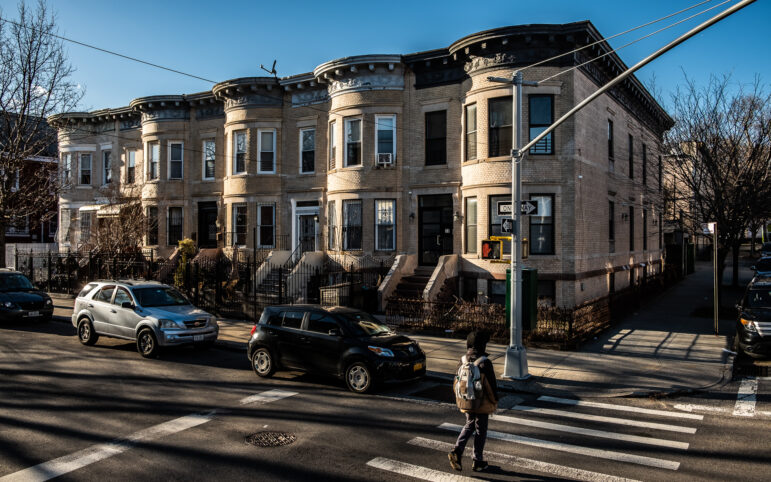


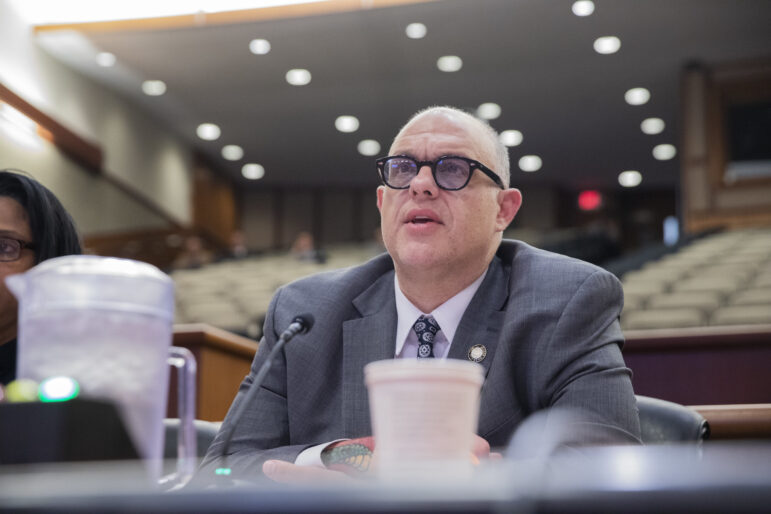
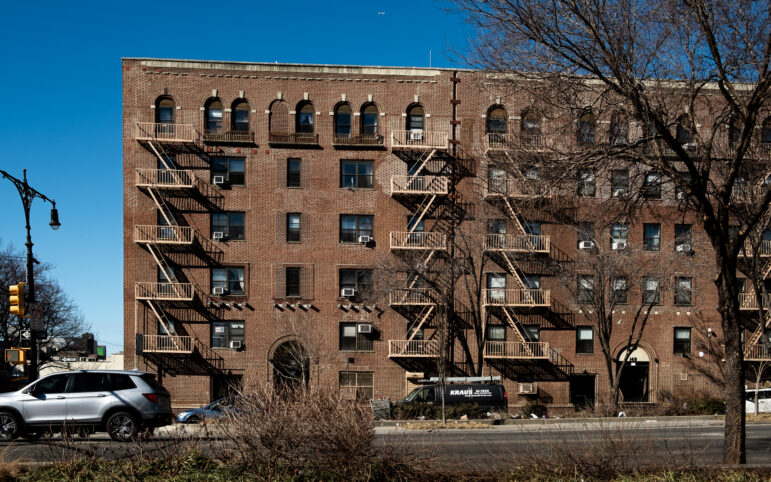


One thought on “Concerns About PACT Private Management Program Take the Spotlight at Annual NYCHA Hearing”
Rad/Pac Should’ve been a Survey with Developments to give Opinion or Do Door Knocking for All Developments for Clear Understanding, Many Still Don’t Understand the Changes Due to Disabilities.